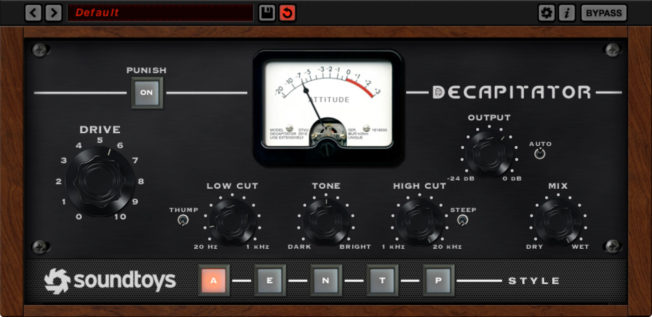Learn how to enhance your mix with saturation. This guide will give you a better understanding of audio saturation and harmonic distortion.

What is Saturation in Music?
Audio saturation is the essence of what makes analog hardware sound musical and pleasing. Driving sounds through tape, tubes, transistors, and circuits have long been an essential ingredient in great-sounding mixes.
Saturation is a subtle form of distortion that adds pleasant-sounding harmonics. The effect originates from the analog days when audio recordings ran through various pieces of hardware. Mix engineers discovered they could overload magnetic tape machines, tube amps, and transistor-based preamps to create a type of “soft-clipping.” This technique gave recordings sought-after qualities that sounded pleasing.
To this day, artists and engineers use saturation to add presence, character, warmth, edge, cohesion, and more. From subtle to extreme, saturation is an integral part of amazing mixes.
[yuzo]
Different Types of Audio Saturation
While some studios still have analog equipment, the industry has shifted to the digital realm. There are several types of saturation plugins that emulate the imperfections of analog hardware. However, the most common types are tape, tube, and transistor.
Tape Saturation
Tape saturation plugins emulate the sound of audio recorded through tape machines. They introduce odd order harmonics, subtle compression, and non-linear shifts in frequency response. Tape saturation also rolls off high-end frequencies and creates a small boost in the lows. Moreover, it rounds off transient peaks, creating a form of compression that smooths out the signal.
Many describe tape saturation as sounding warm and punchy. This type of harmonic distortion works great for adding dimension, fatness, and depth to your mix.
Tube Saturation
Tube saturation plugins emulate the sound of audio driven through tube amps. They introduce even order harmonics. This type of harmonic distortion also adds a subtle form of compression. However, when pushed hard, tube saturation can have an aggressive edge.
Many describe tube saturation as sounding warm, musical, and punchy. This type of harmonic distortion can also increase perceived loudness, dimension, and fatness.
Transistor Saturation
Transistor saturation plugins emulate the sound of audio driven through transistor‑based circuits. You can also achieve this sound by overloading input levels on various hardware and plugin emulations. Transistor saturation introduces odd order harmonics and a form of “hard clipping” compression. Depending on the device, this type of harmonic distortion can have a subtle or aggressive sound.
Many describe transistor saturation as sounding fuzzy, gritty, and textured. Moreover, its impact on transients and higher harmonics can make sounds less punchy and musical when pushed hard. Whereas, subtle settings will give you a smoother tone.
How Audio Saturation Can Improve Your Mix

Audio saturation plays a significant role in music production. Applying saturation to single tracks, bus groups, and the master channel will improve your mix. Even more, it adds that desired analog vibe!
Various flavors of saturation generate harmonics and apply subtle forms of “soft-clipping” compression. This unique effect makes sounds fuller, punchy, and louder. Saturation also adds depth, presence, character, color, and warmth. Moreover, it does an excellent job of “gluing” groups of sounds together. This technique helps create a cohesive mix when applied to bus groups and the master.
Where to Apply Audio Saturation
You can apply saturation on everything. However, overdoing it can make the entire mix sound bad. So, use your ears!
Saturation is also a versatile effect used for both sound design and mixing. Below are a few ways to apply this effect across your mix.
Drums Bus
Applying tape saturation to your drum bus helps “glue” all your drums tracks together. It also helps tame rogue transients and softens high-end harshness. This method is a great way to inject character and excitement. Moreover, it will add subtle “punch” to help your drums cut through the mix.
Basslines
Injecting tube saturation to your bass parts will add power and fatness. Driving your bass through harmonic distortion will also add mid-range to help it cut through the mix. Experiment with different types of saturation. They will enhance your bass big time!
Vocals
Subtle amounts of harmonic distortion will make your vocals pop! Apply saturation to tame wild transients and make thin or dull vocals fuller. It also does an excellent job at warming harsh sounding vocals. It’s the secret ingredient to great sounding vocals.
Synths
Virtual synths often sound too clean and digital. Saturation will bring static synths to life with some analog warmth, fatness, and character. Try some tube saturation to add harmonics and grit. This method will increase perceived loudness and bring your synths upfront.
Master
Applying tape saturation to your master adds a cohesive, analog sound to your mix. However, be gentle with the amount. A little goes a long way.
Inserting a console emulation plugin to the master is another common technique. This move simulates running your mix through an analog console. It also works great on single tracks. Also, try adding channel strip or preamp plugins to several tracks. This method creates a cohesive, analog vibe across your entire mix.
Parallel Saturation
Parallel saturation gives you the best of both worlds. You can mix the original signal with the saturated signal. Use a plugins Wet/Dry mix control if one is available or route the effect through an aux track. This method gives you greater control over the amount of saturation while preserving the original signal.
Conclusion
Infusing your mix with authentic analog character is an excellent way to enhance your music. Also, trying different saturation types across your mix will give you better results. For instance, try using tape on drums, tube on vocals, and transistors on synths. And, remember not to go overboard, or you can cause more harm than good.